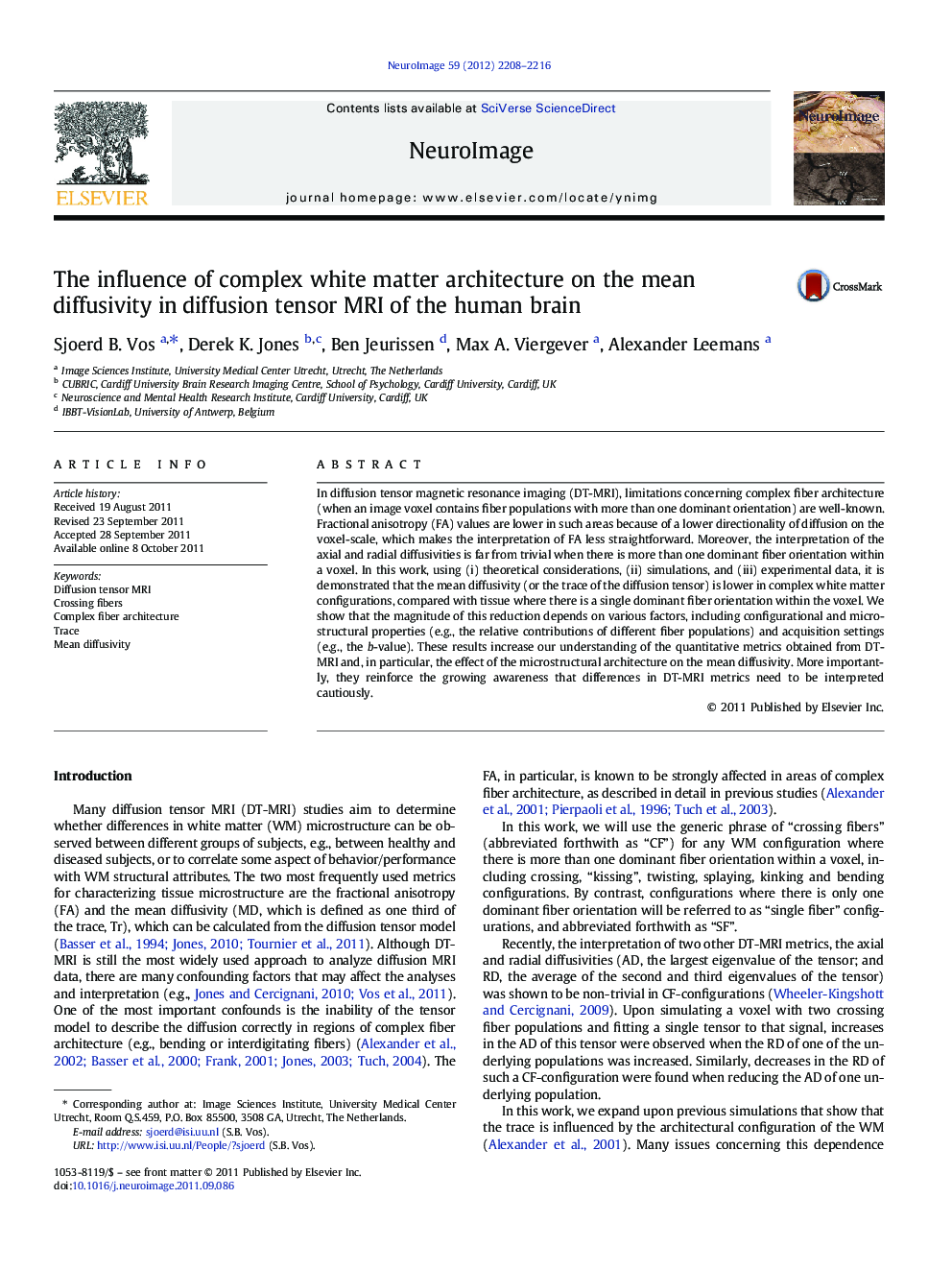| Article ID | Journal | Published Year | Pages | File Type |
|---|---|---|---|---|
| 6033454 | NeuroImage | 2012 | 9 Pages |
In diffusion tensor magnetic resonance imaging (DT-MRI), limitations concerning complex fiber architecture (when an image voxel contains fiber populations with more than one dominant orientation) are well-known. Fractional anisotropy (FA) values are lower in such areas because of a lower directionality of diffusion on the voxel-scale, which makes the interpretation of FA less straightforward. Moreover, the interpretation of the axial and radial diffusivities is far from trivial when there is more than one dominant fiber orientation within a voxel. In this work, using (i) theoretical considerations, (ii) simulations, and (iii) experimental data, it is demonstrated that the mean diffusivity (or the trace of the diffusion tensor) is lower in complex white matter configurations, compared with tissue where there is a single dominant fiber orientation within the voxel. We show that the magnitude of this reduction depends on various factors, including configurational and microstructural properties (e.g., the relative contributions of different fiber populations) and acquisition settings (e.g., the b-value). These results increase our understanding of the quantitative metrics obtained from DT-MRI and, in particular, the effect of the microstructural architecture on the mean diffusivity. More importantly, they reinforce the growing awareness that differences in DT-MRI metrics need to be interpreted cautiously.
⺠The mean diffusivity (MD) in diffusion tensor MRI is affected by crossing fibers. ⺠MD values are lower in complex fiber architecture than in single fiber voxels. ⺠This is shown using theoretical considerations, simulations and in vivo experiments. ⺠In vivo, mean diffusivity values decrease when fibers cross at larger angles.
